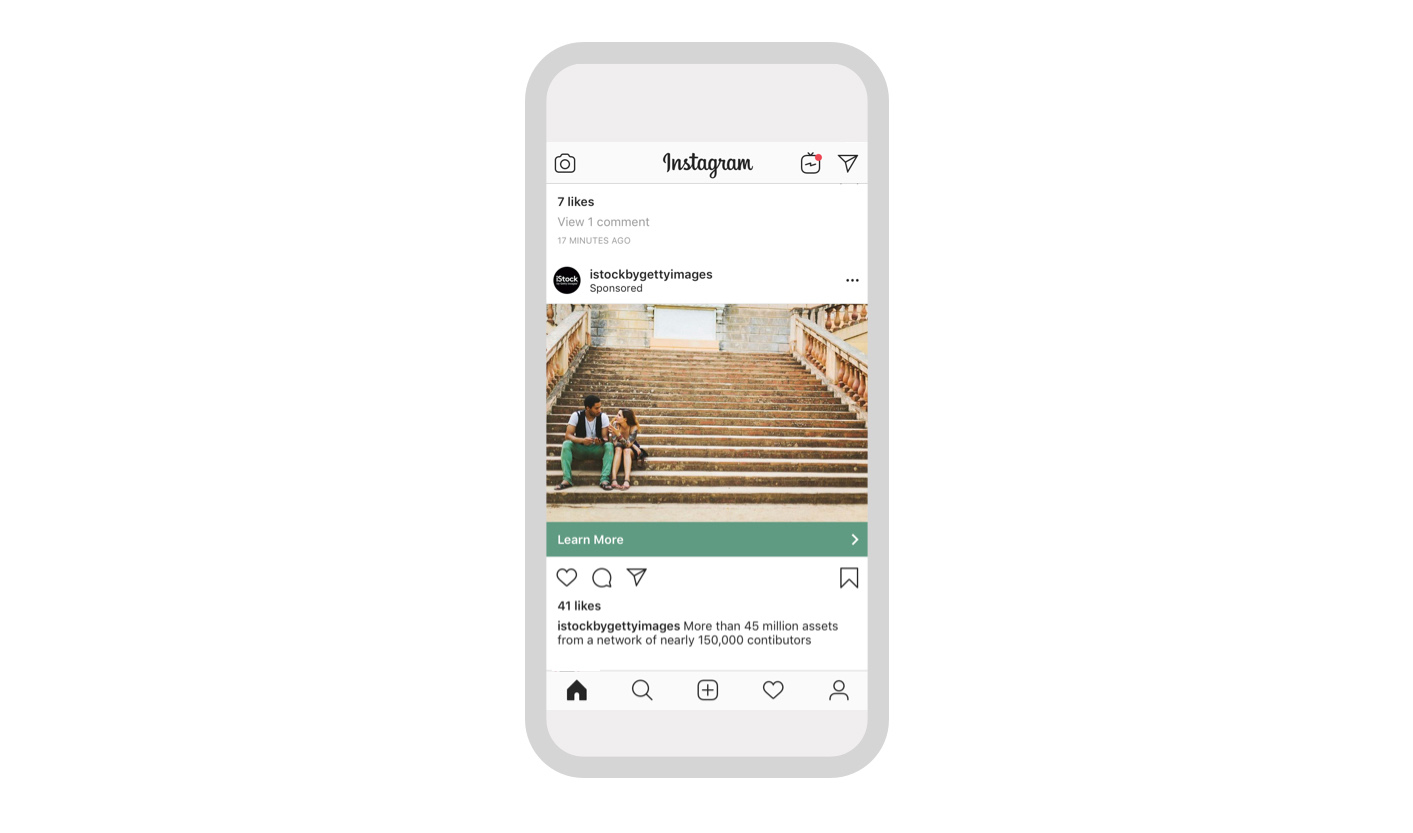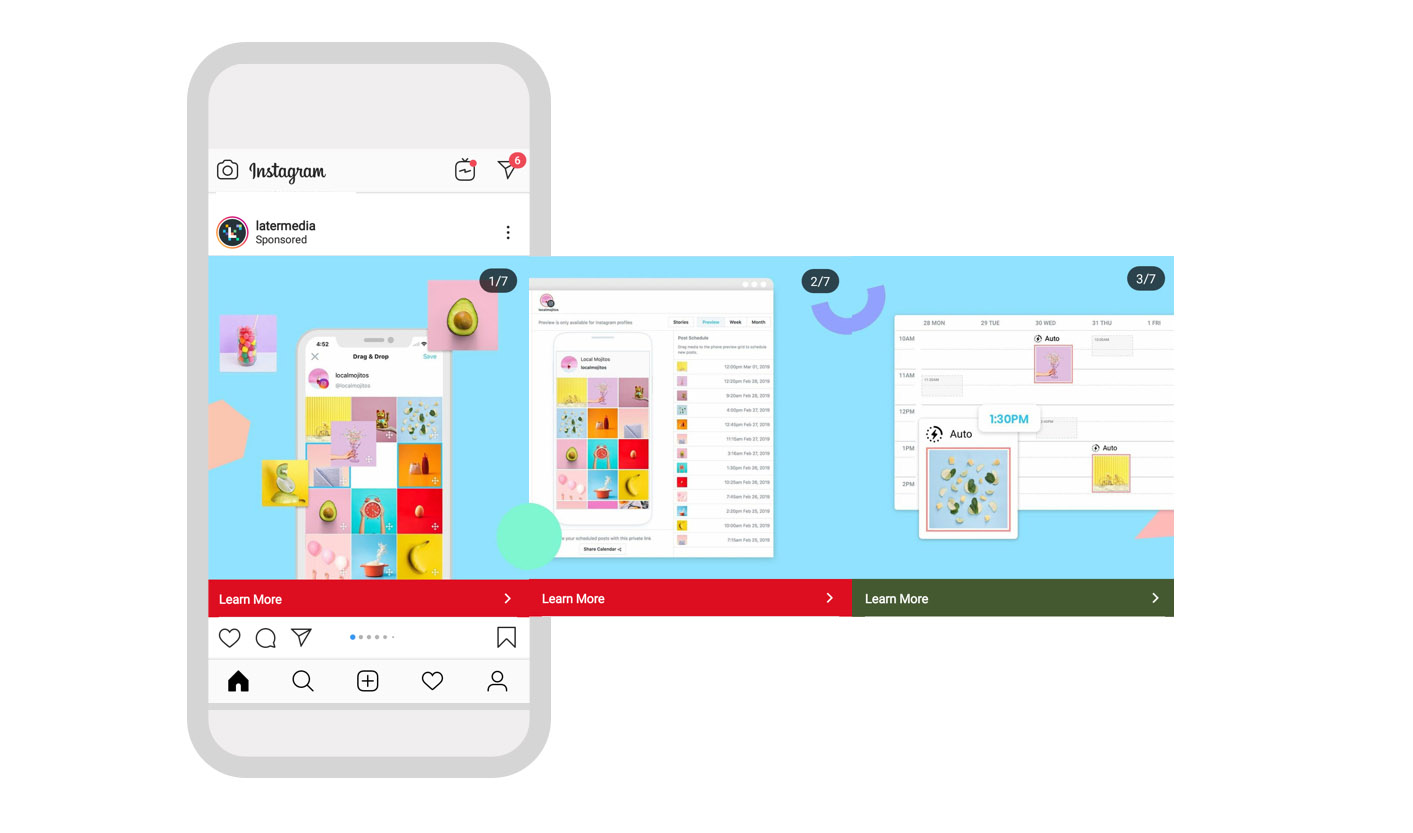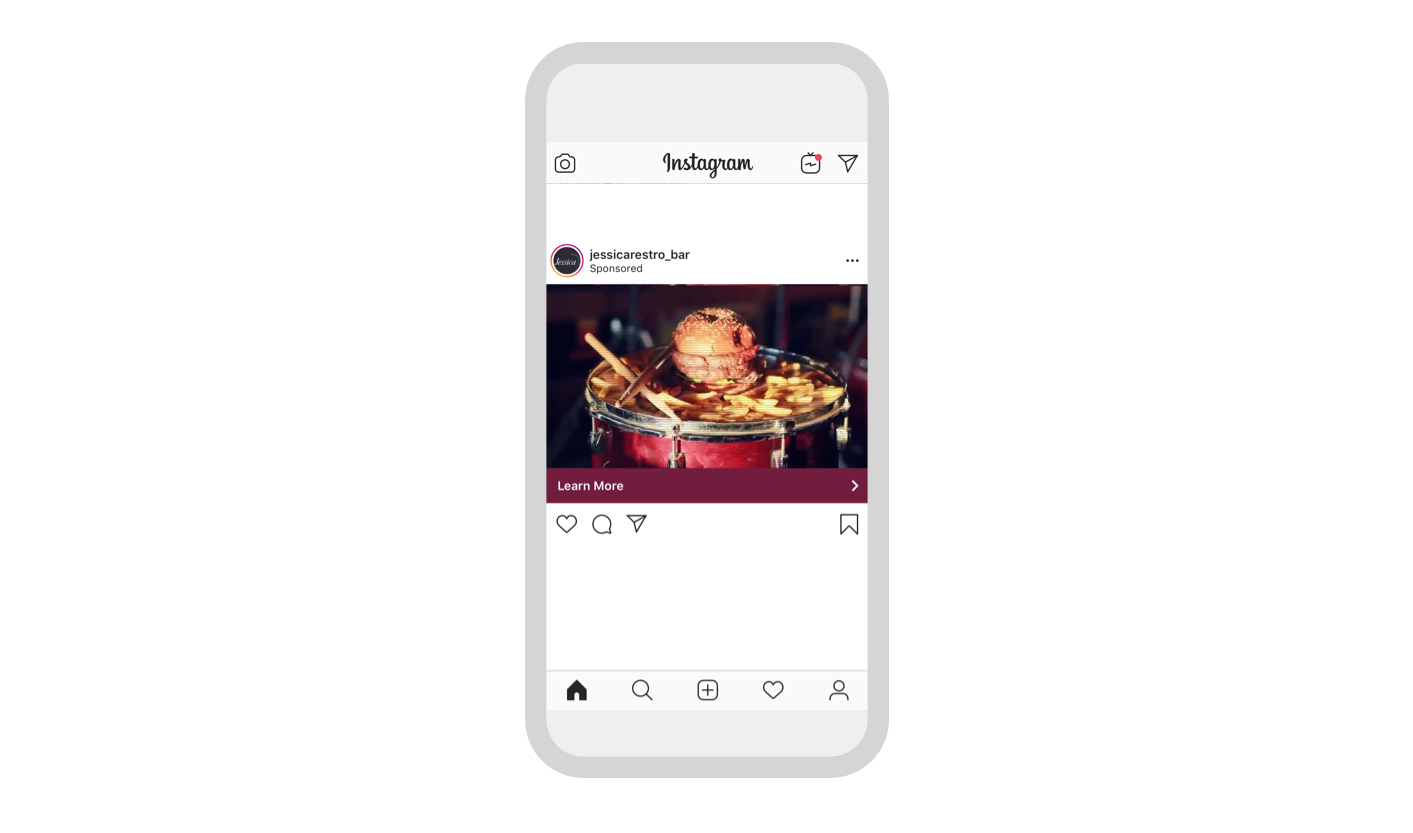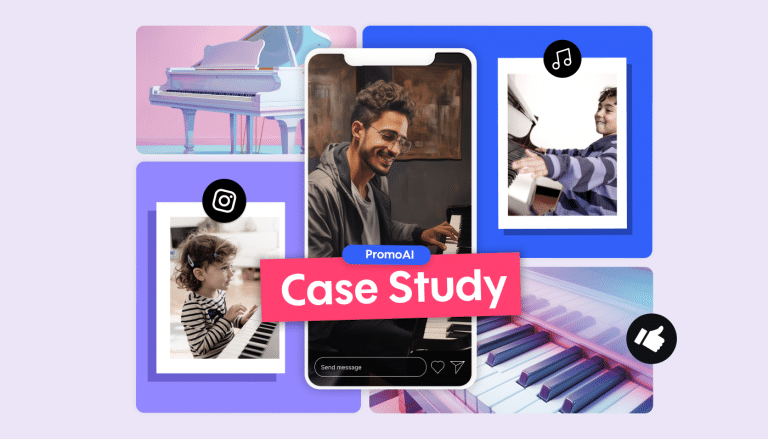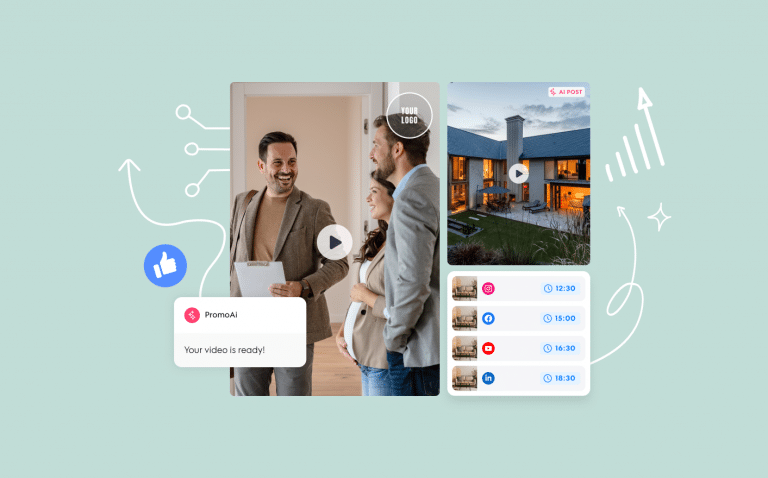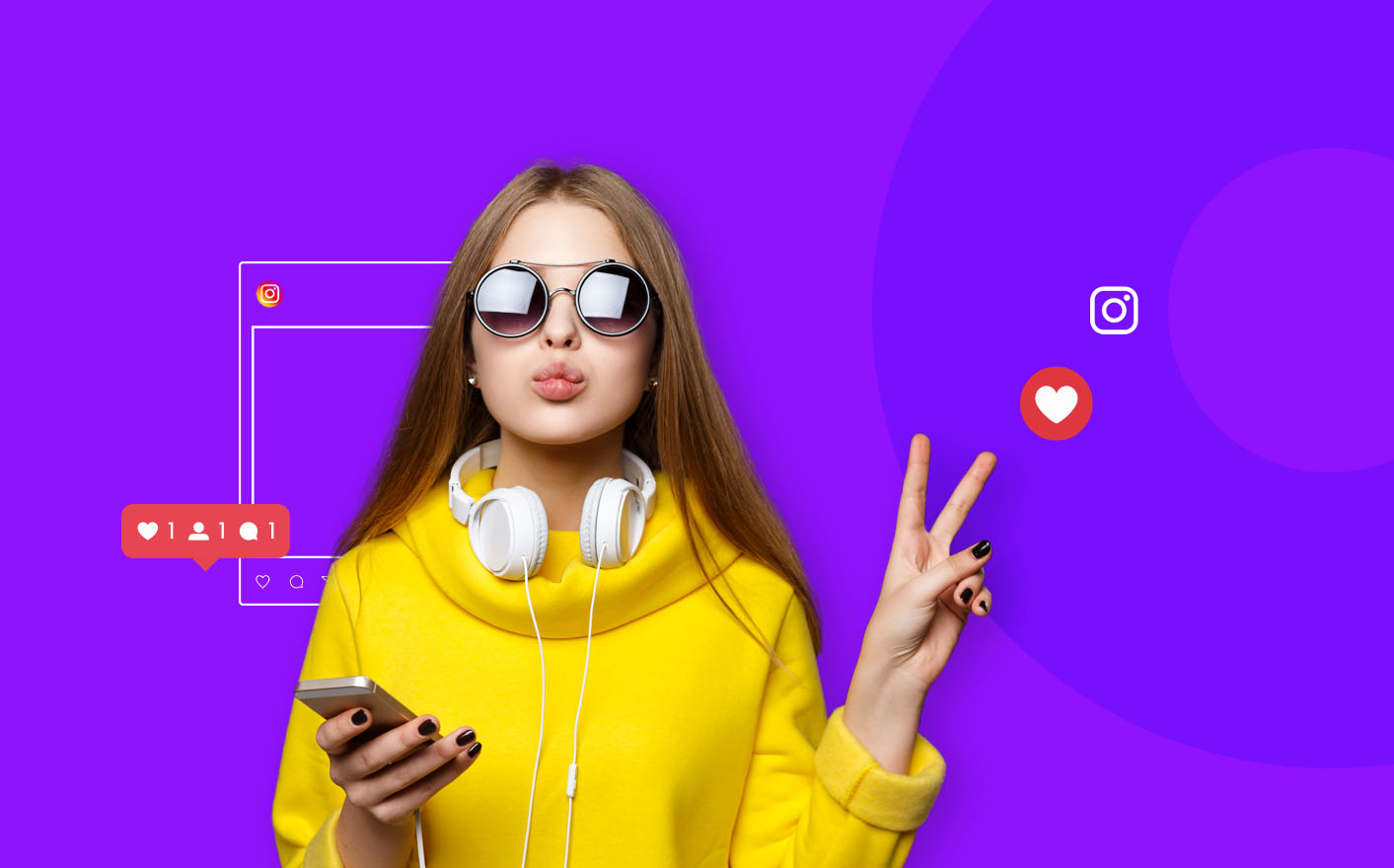
Instagram Advertising: The Complete Guide
In case you’ve missed the memo: Instagram is kind of a big deal. In fact, it’s one of the most popular social media networks around. Owned and powered by Facebook, Instagram is second to none when it comes to mobile-first interaction and engagement. Why then, does Instagram sometimes seem like an afterthought in the world of paid social media marketing?
The truth is that it shouldn’t be. Instagram holds over one billion monthly active users, many of which are in the coveted under 30 demographic. So, we said it once and we’ll say it again – Instagram is kind of a big deal.
Any business that relies heavily on visuals can benefit from a strong Instagram presence. But simply opening an Instagram account isn’t the only way to harness the power of the ‘Gram. So prepare yourself, we’re going to dive right into some Instagram advertising awesomeness.
Ready, set, go.
Why Advertise on Instagram?
There are a lot of reasons to advertise on Instagram, but let’s break down the top three.
- The relationship between Instagram and Facebook – You probably know that Facebook owns Instagram, however, did you know their advertising dashboards are connected? If you’re already running ads on Facebook, it’s easy to automatically place them on Instagram, too. It uses the exact same creative assets, targeting parameters, and budget.
- Instagram is driving sales – You can shop without ever leaving the app and 72% of users actually bought a product they saw on Instagram. From tapping on the ad to hitting the checkout button, it’s a seamless experience.
- Engagement rates are higher – To put it into perspective, Twitter’s median engagement rate is around .046% across all industries. For Instagram it’s 1.73%. That’s nearly 40x higher. By going the Instagram route, you’re reaching a very diverse and active community that doesn’t ignore sponsored content.
So, without further ado, let’s get started.
Choosing a Goal
The first thing to keep in mind is that Instagram is a mobile-first network. Really, it’s a mobile-only network. The platform is intended for mobile use only. While you can use it on a laptop, we’re going to always assume a mobile audience. You should too.
Before we dive into the different types of ads, it’s important to get a broader look at what you can expect. If you’ve ever run ads on your Facebook Page before, you can expect pretty much the same thing. In fact, there is no native “Instagram Advertising” area. Everything will be run through Facebook’s Ad Manager so if you’re familiar with that, you’re ahead of the game!
Ad Objectives
Like Facebook, Instagram allows you to determine the focus of your ad, meaning what you want your ad to achieve. There are several focal points to choose from:
- Brand Awareness
- Traffic
- Reach
- App Installs
- Conversions (for conversions on your website or app)
- Engagement (for post engagement only)
- Video Views
What’s your goal? Well, that’s up to you! Keep in mind that there are different requirements entailed for each goal you select. Other than that, the goals above are pretty intuitive. Want more traffic? Select that option. More app installs? Yup, you get the idea.
All the same, let’s just briefly do a run-down of the different goals available to you.
Brand Awareness
Do people know you? No? Well, let’s get your name out there! Brand awareness campaigns are the boilerplate of ads on Instagram. Their aim is to promote your content in front of as many eyes as possible. Based on Instagram’s algorithm, these individuals are likely to be interested in your product, service or company.
Brand awareness is the most common objective to be found on Instagram and it’s a good place to start.
Traffic
If your goal is to send people to your website or to download your app; traffic is the goal for you. These campaigns are aimed at sending people directly to where the magic happens: your product page or the app store.
Reach
At first glance, “reach” may sound a lot like “brand awareness.” In truth, they’re not super different but they do look to achieve different objectives. Brand awareness campaigns are targeted towards putting your ad in front of the maximum number of people who are likely to engage with or recall your brand later. Reach campaigns are aimed at putting your ad in front of as many people as possible in general.
To that extent, “brand awareness” campaigns are really kind of like a more targeted (through Instagram’s algorithmic goodness) version of a reach campaign. However, if your goal is to simply reach as many people as possible: reach might be the one for you.
This is one of the reasons why having a plan for your campaign is crucial. You need to know what your goals are for both your overall strategy as well as the individual ad. Of course, not all ads are created equally!
App Installs
Do you have an app? You probably want people to install it. In fact, that’s kind of the point of having an app, isn’t it? If you don’t have an app, this is a pretty poor choice for a campaign objective. When creating an ad or campaign with this objective, you’ll be asked to select your app from the app store so Instagram can work its magic and get you some downloads.
Conversions
This campaign drives people to take an action either on your website or in your app; often, but not always, a purchase. This campaign requires that you add a pixel to your website to track these conversions. If you have a specific conversion objective in mind, this is the goal for you.
Engagement
This objective is used to drive engagement such as likes, shares, etc. on the specific ad post. If your goal is to spread your message and draw attention specifically to the message of that ad (such as a sale or an event), this may be the goal for you.
With Instagram’s latest rollout of Branded Content Ads, you can create placements that don’t feel or look like common “advertisements.” This is due to the fact that a branded content ad is designed by a creator, showcasing the brand’s relevancy and usage. This communicates brand loyalty and trust, resulting in heightened interaction.
Video Views
Bet you can’t guess what this campaign is used for! That’s right, if you’re promoting a video ad, this objective gets it in front of as many eyes as possible. Similar to an engagement objective, the goal here is to get your content seen and played.
Targeting your Audience
If this article were a cooking show, we’d be about halfway through cooking our delicious meal. Except, our “meal” is a tasty, effective Instagram advertising campaign. So, we’ve decided what we want to cook, we’ve prepped our ingredients, got the objectives working in the oven, and now it’s time to create your custom audience!
That’s right, your ad targeting includes selecting the audience you want to show your ad too! This is really the awesome part of advertising on either Instagram or its parent company, Facebook. The ad targeting options in the ads manager really let you select your ideal customer and put your ad in front of them.
Your audience targeting can be based on a few different factors. Well, actually, more than a few.
- Age
- Gender
- City
- Hobbies
- And more
So, let’s say your target audience is 40-year-old women who live in Milwaukee and enjoy hang gliding and playing Fortnite. We’re not sure how large a group that might be, or just what it is you’re selling to these folks; but the point is: you can target them! Every business has a pretty good idea of who their target customer is. So, go forth and target them!
Every business has a pretty good idea of who their target customer is. So, go forth and target them!
As you add different targeting qualifiers, you’ll see the gauge at the top right change. Obviously, the more qualifiers you include, the smaller your audience is going to be. This helps to target these folks specifically, but it does reduce the overall number of people who will see your ad. It helps to try and strike a good balance between quality and quantity.
Okay! Now we’ve got a big ol’ pot of Instagram advertising on the stove. We’re not sure why we’re going with this cooking metaphor but we’re sticking to it. Moving right along, it’s time to season the dish with a little bit of variety. And for that, it’s time to choose the perfect spice. And by “spice” we mean “the type of ad.”
Setting a Budget
Now that you’ve built a surefire Instagram advertising campaign, it’s time to put some money behind it. Setting the budget and determining the ad schedule go hand in hand.
First, you need to determine how long and how frequently you want your ad to run. Can you accomplish your goals in one week? One month? Are there certain times of day your ad should run? Or will it run continuously?
The good news is that all of this can be flexed to fit your budget. There are two basic ways to set your ad budget in the Facebook Ads Manager:
- Per ad set
- Per ad campaign
You can also choose to set a daily budget or a lifetime budget. The daily budget will spend up to an allotted amount of money per day. So, say you have $100 and allot $10 per day – your campaign can run for 10 days.
The lifetime budget will optimize the spend throughout the duration of the campaign. Again, if you have $100, the Ads Manager will spend it as best fit for your campaign between the selected start and end dates. This type of control is great for small or mid-sized business which needs to keep a close watch on the budget.
As you play around with the different options, watch the Estimated Daily Reach display on the right-hand side to see how your campaign is expected to perform.
Keep in mind, the higher your budget, the more successful your campaign is likely to be. However, deep pockets don’t necessarily guarantee success.
Instagram Ad Types
You’ve got a few ad options to choose from on Instagram. Here’s a rundown of the basic ad formats you can try out.
Photo Ads
Instagram photo ads are your basic, run-of-the-mill, bread and butter ads. They function similarly to Facebook image ads in that they are static images shown in a newsfeed. The reason they may seem pretty similar to Facebook is that Instagram also uses Facebook’s Ads Manager system.
 Pros and cons
Pros and cons
Photo ads are the “standard” Instagram ad you hear all the kids talking about these days. They’re great for showing off a beautiful picture of your product or service. The downside? They’re not as eye-catching as a video and are not able to show off a process or your product in action.
Technical specs
- Caption: up to 125 characters
- File type: JPG or PNG
- Max size: 30MB
- Aspect Ratio: 1:1 (square) 4:5 (vertical) 1.91:1 (landscape)
Carousel Ads
Carousel ads are identical to Facebook’s carousel system, which is a series of pictures and/or videos that are put together and allows users to swipe through the collection. This is a great way to tell a longer story or feature multiple products in the same line.
For example, if you’re a clothing retailer it may be difficult to decide which outfit you want to feature in your photo ad. The answer? Heck, include them all! Let’s say you want to advertise your new fall fashion collection. Don’t just show off one shirt, rather show 10 different outfits as part of a series.
Carousel ads are also effective at demonstrating a step by step process. Let’s say your product requires a little bit of a walkthrough. Carousel ads can show an image or video from each step to help convey the process.
Pros and cons
Carousel ads can be incredibly effective at showcasing multiple steps in a process or displaying a full range of products in a specific line (Such as different colors or sizes). This can be great if you have a lot of information you’d like to transmit to your audience. On the downside, carousel ads are only truly effective if you have multiple high-quality images and videos that fit together. Users must physically scroll through each one so it does put some part of the “work” on the audience.
Finally, it may be a challenge for some businesses to create a coherent message across multiple pieces of content. In general, ads should be short and to the point. With a carousel ad you may run the risk of losing the focus of your message if you’re spreading the content out across multiple images/videos.
Technical specs
- Caption: up to 125 characters
- Min number of cards: 2
- Max number of cards: 10
- Min recommended video length: 3 seconds
- Max recommended video length: 60 seconds
- Max video size: 4GB
- Max image size: 30MB
- Aspect ratio: 1:1
Video Ads
The rising star of Instagram advertising is in the beautiful video ad. Video content is huge right now and is only getting bigger. As such, Instagram video ads are popular, effective, and in high demand. It’s not just Instagram either. Businesses are creating more videos than ever before and doing amazing things with them.
If your business is taking the time to create awesome video content, there’s no time like the present to put it to good use! And there’s no place like Instagram to get started!
Instagram video ads are short (60-second maximum) videos which advertise your business, brand, or products. They’re shown in the regular Instagram feed as they scroll through the platform. While your video can be up to 60 seconds long, it’s better to keep it shorter.
In fact, according to Facebook; 15 seconds is your ideal length. Going a step further, COO Sheryl Sandberg has suggested that 6-second videos actually show “higher brand metrics across the board.”
Bottom line: For best results, keep it short, sweet, and to the point.
 Pros and cons
Pros and cons
Video ads are the up and coming heroes of the Instagram advertising world. With more people hungering for video content, it’s no wonder there’s an 80% increase in video demand year-over-year.
Video content is also consistently ranked by marketers as having the best ROI of any other online content form. If there’s a downside to video, it’s that it can sometimes be time-consuming to make. With Promo, of course, that’s no longer a concern! Therefore, the only downside is that you haven’t started making business videos sooner!
Technical specs
- Caption: up to 125 characters
- Min length: 1 second
- Max recommended length: 60 seconds
- File type: MP4 or MOV (though most standard video formats are acceptable)
- Max size: 4GB
- Aspect Ratio: 1:1 (square) or 4:5 (vertical)
Story Ads
Instagram Stories ads operate in much the same way as general feed video ads. The important distinction is that they are shown on Instagram Stories; one of the more popular features of Instagram. The technical specs are all the same as “regular” video ads so you can use the same content.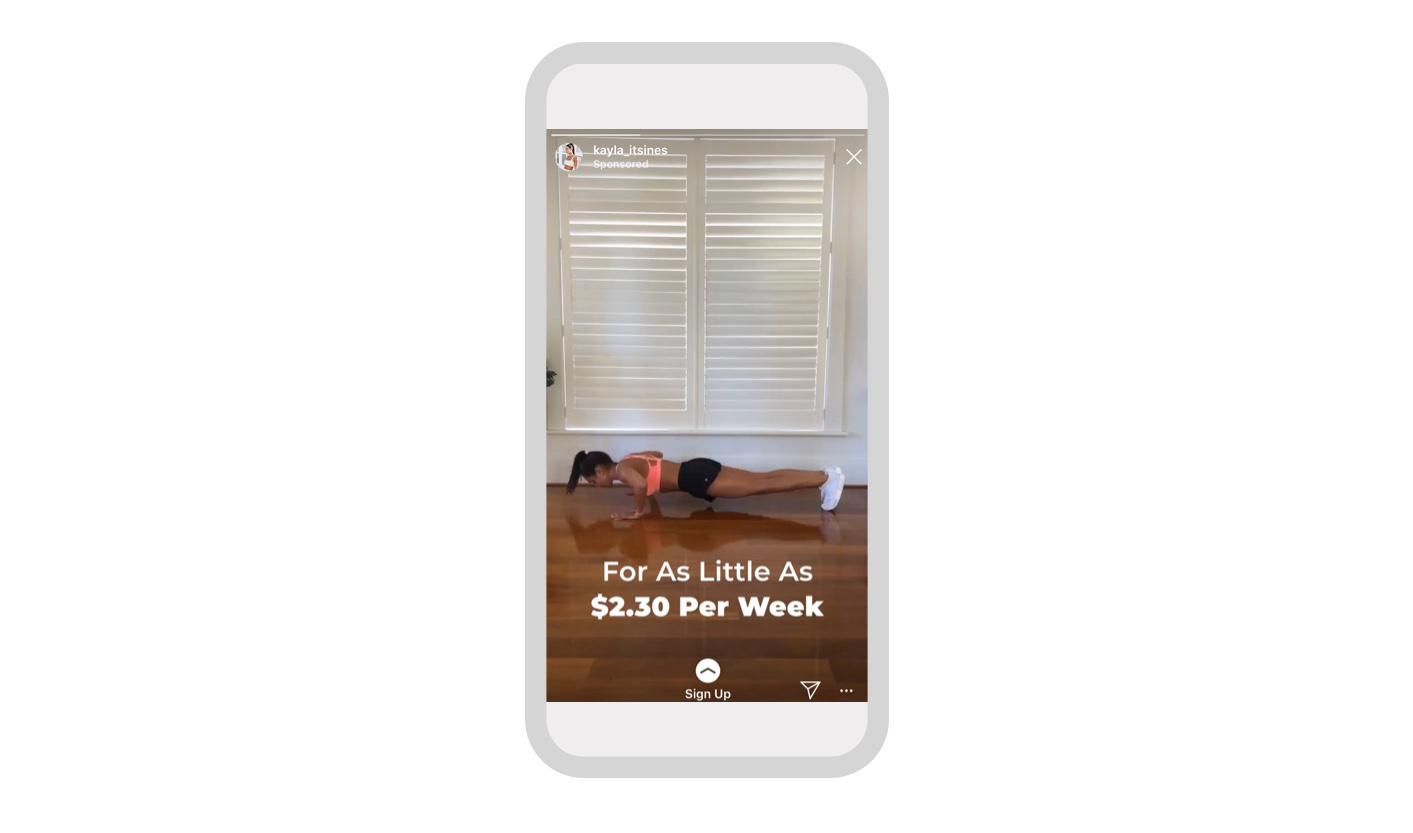 Pros and cons
Pros and cons
The true benefit of story ads is that they’re shown during a very popular feature of Instagram. While videos are quite popular on Instagram, they’re even more common in Stories. This means your audience is already actively engaged and watching videos by the time your Stories Ads pops up.
Technical specs
- Caption: not currently available. Any text must be part of the image file.
- File type: MP4 or MOV (though most standard video formats are acceptable)
- Video size: 4GB
- Image size: 30MB
- Minimum length: 1 second
- Maximum length: 60 seconds
- Aspect Ratio: 9:16 (Also for image Story ads)
- Defining and measuring success
Branded Content Ads
The Branded Content Ads feature was released in early June 2019 and allow businesses to utilize creators’ organic branded content posts as their own Instagram Feed (with permission). Your target audience is more inclined to engage with a paid partnership post as it shows how real creators incorporate your product or brand into their everyday lives. This promotes brand trust and further supports Ipsos’s finding that claims: “68% of people say they come to Instagram to interact with creators.” With a branded content ad, businesses can relay their message through a trusted creator. This allows your brand to reach new prospective audiences and easily measure its effectiveness.
Pros and cons
Branded Content Ads provide businesses with the opportunity to incorporate a creator’s viewpoint into their marketing plan. Audiences may be more open to hearing about a brand from a creator’s experience rather than from the brand itself. On the other hand, this type of advertising is fully dependent on how the creator positions and speaks about the brand. Additionally, creators may not agree to have their Instagram posts be turned into branded content ads and would prefer to keep this material organic.
To allow creators permission to tag your brand:
- Visit your advertiser profile in the Instagram app, click “edit profile” and select “Business Settings”
- If you see that “Require Approvals” is turned on, you can see “Approved Accounts” (if the “Require Approvals” is turned off, no further action is needed)
- Click “Approved Accounts” and add the desired creator’s Instagram handle
- Click “Done”
To create a branded content ad:
- Go to your Ads Manager and create an ad
- Pick an objective to reach with your Branded Content ad (video views, traffic, engagement, brand awareness objective)
- Create your ad, select targeting and choose Instagram Feed as the ad placement
- At the Ad level, your Branded Content will be shown in the area labeled “Use Existing Post.”
- Click into this section and choose Select Post/Change Post within the Creative section. The first time you set up a Branded Content Ad, the Change Post will appear as Select Post.
- Within the Select Post section, find the Branded Content tab and click on this. You will see a list of branded content that creators have granted you permission to use.
- Select the post that you would like to promote on your brand’s feed.
Evaluating Success
The success of your campaign will depend greatly on, you guessed it, your objective. If your goal was to increase traffic to your website, for example, your ad analytics will be able to show how many users clicked through to your site. What’s more, your website analytics will also show this traffic originating from Instagram.
More than just the raw numbers, however, is also the cost associated with these actions. I.e. how much did it cost you (as part of your ad budget) to send that traffic to your site.
For example, if your ad budget is $100 and you sent 100 people to your website; your cost per click is $1.00. Is this worth it? It depends on what you are gaining from every click. The average cost per click on Instagram is about $1.41 based on recent analysis. However, this number can change slightly based on your industry.
Of course, your goal is to get that number down as low as possible and get more results for less money. The best way to do this? Test your ads, try to improve on them, and keep striving to make them better.
[banner id=11541]
